The Silent Cost: Why Understanding Forex Spreads is Crucial
Welcome, future masters of the market! As you embark on or deepen your journey into the fascinating world of Forex trading, you’ll quickly encounter various concepts that impact your profitability. Beyond predicting price movements, understanding the costs associated with trading is absolutely fundamental. Think of it like running any business – you need to know your overhead.
In Forex, one of the most significant and ever-present costs is the spread. It’s often called the “silent cost” because it’s not an explicit fee you pay after a trade, but rather the difference built into the price itself. For active traders, especially those using strategies like scalping or high-frequency trading that involve many small trades, minimizing this cost is paramount. Every pip saved on the spread translates directly into potential profit or reduced loss.
We’re here to demystify the spread, explain why keeping it low is crucial for your trading efficiency, and guide you towards the currency pairs where you’re most likely to find those advantageous narrow spreads. By the end of this guide, you’ll have a solid understanding of how spreads work, what influences them, and how to strategically choose your trading instruments based on this vital factor.
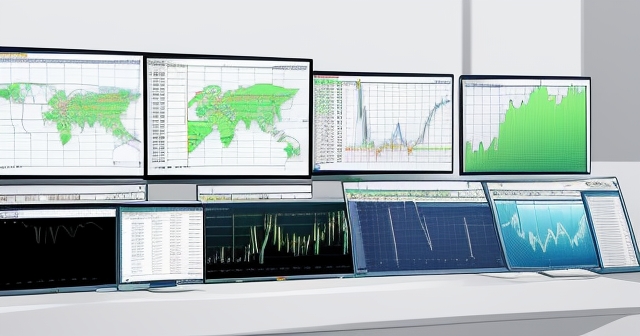
Let’s start with the basics. When you look at any currency pair on your trading platform – say, EUR/USD – you’ll see two prices: a higher price (the ask price) and a lower price (the bid price). The ask price is the price at which you can *buy* the base currency (EUR in this case) using the quote currency (USD). The bid price is the price at which you can *sell* the base currency.
The spread is simply the difference between the ask price and the bid price. It’s usually measured in pips (points in percentage), which is the fourth decimal place for most currency pairs (or the second decimal place for JPY pairs).
For example, if EUR/USD is quoted as Bid 1.1050 and Ask 1.1051, the spread is 0.0001, or 1 pip. This 1 pip difference is essentially the cost you pay to execute a trade. When you buy at the ask and immediately wanted to sell, you’d have to sell at the lower bid price, instantly incurring a loss equal to the spread.
This difference is how your broker makes money on “spread-only” accounts. They buy at the bid price from a liquidity provider (or other market participants) and sell at the ask price to you, pocketing the tiny difference on each transaction. Understanding this fundamental concept is key to appreciating the impact of even small differences in spreads over many trades.
Decoding the Bid-Ask Spread: Your Transaction Cost
Why should you, as a trader, prioritize finding low spread currency pairs? The answer is simple: transaction costs. Every time you open and close a trade, you cross the spread. This cost eats into your potential profit or adds to your loss.
Imagine you are using a scalping strategy, aiming to capture just a few pips profit on each trade. If the spread is 2 pips, you need the price to move 2 pips in your favor just to break even *before* factoring in any profit target. If the spread is only 0.5 pips, your break-even point is much closer, making it significantly easier to achieve a profitable outcome.
For frequent traders, these small costs accumulate rapidly. Over weeks and months, trading pairs with consistently low spreads can save you a substantial amount of money compared to trading pairs with wider spreads. This saved cost directly improves your overall profitability.
| Spread Type | Description | Typical Spread |
|---|---|---|
| Fixed Spread | A constant spread offered by the broker regardless of market conditions. | Wider |
| Variable Spread | A spread that fluctuates based on market conditions and liquidity. | Tighter |
While the spread is a primary cost, remember that some brokers offer “RAW pricing” or commission-based accounts. In these models, the spread itself might be extremely low (potentially 0.0 pips), but you pay a separate commission fee per lot traded. The total trading cost in such cases is the spread *plus* the commission. It’s crucial to consider this total cost when comparing brokers and account types, as we’ll discuss later.
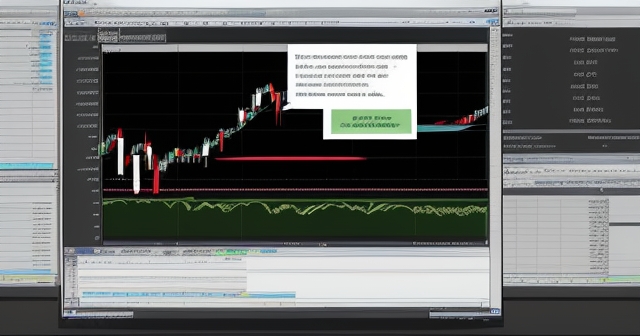
Liquidity is King: The Cornerstone of Low Spread Currency Pairs
Now that we understand *what* a spread is and *why* low spreads are beneficial, let’s explore *where* to find them. The key factor determining the width of a spread is liquidity. Think of liquidity as how easily and quickly you can buy or sell a currency pair without significantly impacting its price. A highly liquid market has many buyers and sellers actively trading at any given moment.
In a highly liquid market, there is intense competition between buyers and sellers. This competition forces the difference between the bid and ask prices – the spread – to be very narrow. If a broker tries to offer a wide spread in a highly liquid market, traders can simply go to another broker or liquidity provider offering a tighter spread.
Conversely, in a low liquidity market, there are fewer participants. Finding a counterparty for your trade can be more difficult, and the spread widens as liquidity providers require a larger margin to facilitate the transaction. Trading exotic or less common currency pairs, especially outside of peak trading hours, often results in much wider spreads due to lower liquidity.
Therefore, to find consistently low spreads, you need to focus on the most liquid parts of the Forex market. And where is the most liquidity found? In the major currency pairs.
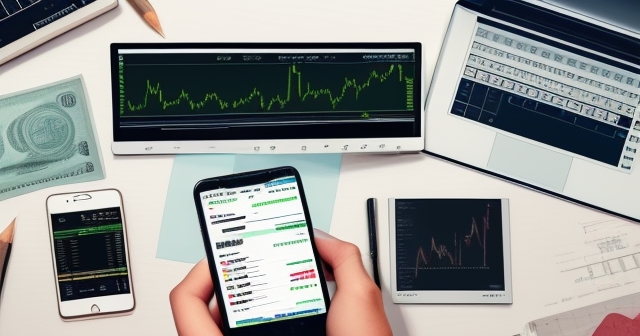
Your Go-To Allies: Identifying the Most Liquid Major Currency Pairs
The Forex market is global, but trading volume is concentrated in certain currency pairs that involve the world’s major economies. These are known as the Major Pairs. They are paired with the U.S. Dollar (USD), which is the world’s primary reserve currency and involved in the vast majority of global financial transactions.
Due to the sheer volume of trading activity and the deep pools of liquidity available, the Major Pairs consistently offer the tightest spreads in the Forex market under normal conditions. These are your go-to allies if minimizing transaction costs is a priority.
| Currency Pair | Base Currency | Quote Currency |
|---|---|---|
| EUR/USD | Euro | US Dollar |
| USD/JPY | US Dollar | Japanese Yen |
| GBP/USD | British Pound | US Dollar |
| USD/CHF | US Dollar | Swiss Franc |
| AUD/USD | Australian Dollar | US Dollar |
| USD/CAD | US Dollar | Canadian Dollar |
While technically not a major pair as it doesn’t involve the USD as the quote currency, EUR/JPY is also considered highly liquid and often offers relatively low spreads due to the combined trading volume of the two currencies involved. Cross pairs (pairs not involving the USD, like AUD/CAD or GBP/JPY) typically have slightly wider spreads than the majors, but can still be relatively tight if they involve highly liquid currencies like EUR, JPY, or GBP.
Focusing your trading activities primarily on these major pairs ensures you benefit from the lowest possible transaction costs under typical market conditions.
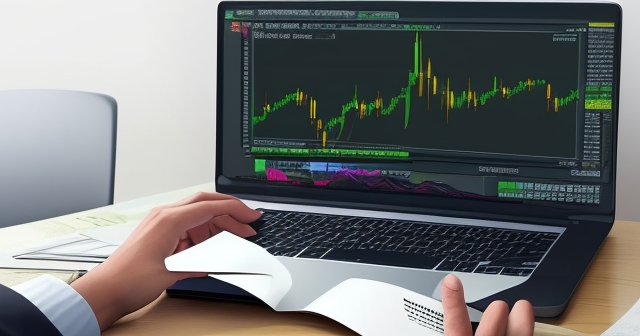
A Closer Look: Characteristics of Key Low Spread Pairs (EUR/USD, USD/JPY, GBP/USD, etc.)
Let’s take a moment to appreciate the characteristics of some of these key low spread currency pairs, as each has its own rhythm and influences:
- EUR/USD: Often cited as the most traded currency pair globally, the EUR/USD typically boasts the absolute tightest spreads. Under normal market conditions, spreads can frequently be below 1 pip and, with certain brokers offering RAW pricing, can even reach 0.0 pips plus commission. Its price movements are heavily influenced by economic data from both the Eurozone (like CPI, GDP, ECB policy decisions) and the United States (Fed decisions, NFP, Inflation).
- USD/JPY: The second most traded pair, USD/JPY, also offers very tight spreads. Its movements are influenced by US economic data and Federal Reserve policy, as well as Japanese economic data (like Inflation, GDP) and Bank of Japan (BoJ) policy. It’s known for reacting strongly to interest rate differentials between the two countries.
- GBP/USD: The “Cable,” as it’s known, is the third major pair by volume. While still offering very low spreads, GBP/USD can sometimes be more volatile than EUR/USD or USD/JPY due to the UK’s economic size and susceptibility to specific political factors (like Brexit aftermath, Bank of England (BoE) policy). Spreads are typically tightest during the London and New York trading sessions overlap.
- USD/CHF: Often negatively correlated with EUR/USD, the USD/CHF (nicknamed the “Swissie”) benefits from the perceived safe-haven status of the Swiss Franc (CHF). It offers consistently low spreads. Its movements are influenced by US data and Federal Reserve policy, as well as Swiss data and Swiss National Bank policy. Geopolitical events can sometimes cause safe-haven flows into the CHF, impacting the pair.
- AUD/USD: This pair is heavily influenced by commodity prices (as Australia is a major commodity exporter) and the Reserve Bank of Australia (RBA) policy. AUD/USD offers low spreads, particularly during the Asian and early London trading sessions. US data and Fed policy also exert significant influence.
- USD/CAD: Known as the “Loonie,” this pair is also sensitive to commodity prices, particularly oil, as Canada is a major oil producer. Bank of Canada (BoC) policy and US data are primary drivers. It offers low spreads, especially during North American trading hours.
| Currency Pair | Primary Influence | Best Trading Session |
|---|---|---|
| EUR/USD | Eurozone & US Economic Data | London/New York Overlap |
| USD/JPY | US & Japan Economic Data | New York Session |
| GBP/USD | UK Economic Data | London Session |
| USD/CHF | US & Swiss Economic Data | New York Session |
Understanding the typical behavior and key drivers of these pairs can help you anticipate potential volatility and manage the risk of spread widening, even while benefiting from their inherent low costs.
Beyond the Average: What Makes Spreads Widen or Tighten?
It’s important to understand that even on the most liquid Major Pairs, spreads are not always static. They are dynamic and constantly adjust based on real-time market conditions. Most brokers offer variable spreads, meaning the spread you get can fluctuate. Some brokers might offer fixed spreads, but these are often wider than the average variable spread during normal conditions, as the broker needs to build in a buffer for volatile times.
Several factors can cause spreads to widen significantly:
- High Volatility: When prices are moving sharply and unpredictably, liquidity can temporarily decrease as market participants become hesitant. This leads to wider spreads.
- Low Liquidity: This occurs during off-hours (like the Asian session for pairs not involving JPY or AUD, or the hours between the US close and Asian open), during holidays, or when unexpected events reduce market participation. With fewer buyers and sellers, finding a counterparty is harder, and spreads widen.
- Major News Events: The moments immediately before, during, and after high-impact economic data releases (like NFP, CPI, Interest Rate Decisions) or significant political announcements are periods of extreme uncertainty and volatility. Spreads can widen dramatically as brokers and liquidity providers adjust their pricing to manage the increased risk.
- Broker-Specific Issues: While less common with reputable brokers, technical issues or poor liquidity feeds from a broker’s providers can also lead to temporary spread widening.
Conversely, spreads are typically at their tightest during peak trading hours when market activity and liquidity are highest. For instance, EUR/USD spreads are usually tightest during the overlap of the London and New York trading sessions.

Being aware of these factors and checking an economic calendar for upcoming news events is crucial for managing the risk of unexpected spread widening, even when trading typically low spread currency pairs.
Navigating Volatility: How News Events Affect Currency Spreads
Major economic and political news events are key drivers of volatility in the Forex market. While they present trading opportunities, they also carry the risk of significant spread widening, even on the most liquid pairs. This is particularly true for high-impact data releases from the US, given the dollar’s central role.
Key news events that can dramatically impact spreads include:
- Interest Rate Decisions and Central Bank Meetings: Announcements from the Federal Reserve (Fed), European Central Bank (ECB), Bank of England (BoE), etc., about interest rates and monetary policy are huge market movers.
- Inflation Data: Consumer Price Index (CPI), Producer Price Index (PPI), and other inflation measures are closely watched as they influence central bank policy.
- Employment Reports: The US Non-Farm Payrolls (NFP) report is arguably the biggest single monthly release affecting volatility and spreads, but reports like JOLTS and unemployment rates from other major economies are also significant.
- GDP and Retail Sales: These indicate the health and growth of an economy.
- Political Events: Elections, policy announcements (like trade tariffs), and geopolitical conflicts (like the Russia-Ukraine Conflict mentioned in the data) can cause uncertainty and volatility in specific currencies and pairs.
Trading around these events requires careful consideration of potential spread widening. While the resulting volatility offers profit potential, a suddenly wide spread can make entering or exiting a trade costly and increase your risk of hitting stop-loss orders prematurely.
Focusing on highly liquid pairs is still the best approach for news trading, as their spreads tend to widen *less* than less liquid pairs during volatility, and they recover faster once the initial shock subsides. However, always be prepared for the possibility of temporary wider spreads.
Choosing Your Partner: Broker Spread Models and Total Trading Costs
Your choice of broker significantly impacts the spreads you pay. Brokers have different execution models and pricing structures:
- Spread-Only Model: The broker’s compensation is solely built into the spread. These spreads tend to be wider than RAW spreads, but there’s no separate commission fee.
- RAW Pricing + Commission Model: The broker provides access to very tight, interbank-like spreads (which can be as low as 0.0 pips on major pairs during peak liquidity). However, they charge a separate commission for each trade executed.
| Broker Model | Spread Type | Commission Structure |
|---|---|---|
| Spread-Only Model | Wider, Fixed Spreads | No Commission |
| RAW + Commission Model | Tighter, Variable Spreads | Commission Applies |
When evaluating a broker based on spreads, you need to consider the *total* trading cost. For a RAW pricing model, this is the spread *plus* the commission converted into pips. For example, a 0.2 pip spread plus a commission equivalent to 0.5 pips per trade results in a total cost of 0.7 pips.
Comparing total costs across different broker models and pairs is essential. Don’t just look at the minimum possible spread advertised; investigate the average spread for the pairs you trade during your typical trading hours, and factor in any commissions.
Execution speed is also implicitly related to costs. Slippage (executing a trade at a worse price than intended) can occur during volatile periods, adding to your effective cost. Brokers with faster execution can help minimize slippage risk.
When choosing a trading platform, Moneta Markets‘ flexibility and technological advantages are worth mentioning. It supports MT4, MT5, Pro Trader and other mainstream platforms, combined with high-speed execution and low spread settings, providing a good trading experience.
Strategies for Success: Leveraging Low Spreads in Your Trading
Low spreads are not just a cost-saving feature; they are integral to the viability of certain trading strategies. Understanding and leveraging them effectively can enhance your trading outcomes.
Here are a few ways low spreads are advantageous:
- Scalping: As mentioned, scalpers aim for small, quick profits. Low spreads drastically reduce the distance needed to reach profitability on each trade, making this strategy viable. Trading highly liquid, low spread pairs like EUR/USD during peak hours is essential for scalpers.
- High-Frequency Trading (HFT): Similar to scalping, HFT relies on executing a vast number of trades to capture tiny price discrepancies. Minimal transaction costs via low spreads are critical for HFT profitability.
- Trading Volatile Events: While spreads widen during news, trading high-impact events on highly liquid pairs (like USD/JPY during NFP) means the spread widening might be less extreme compared to less liquid pairs. This allows traders to potentially capture large price movements while managing transaction costs more effectively than on other pairs.
- Strategies with Tight Stop Losses: If your strategy involves placing very tight stop losses, a wide spread can increase the chances of being stopped out prematurely before the price has a chance to move in your favor. Low spreads help prevent this.
By focusing your attention and trading activity on the most liquid low spread currency pairs, you are positioning yourself to execute strategies that are sensitive to transaction costs more efficiently. This gives you a structural advantage before you even analyze charts or market data.
Managing Risk: Staying Prepared for Unexpected Spread Widening
Even when focusing exclusively on typically low spread currency pairs, smart traders understand that spreads can and do widen under certain market conditions. Risk management is not just about position sizing and stop losses; it’s also about anticipating potential increases in trading costs.
Here are steps you can take to manage the risk associated with spread widening:
- Be Aware of the Economic Calendar: Always know when high-impact news events are scheduled, especially for the currencies you are trading (e.g., watching US CPI for EUR/USD). Consider reducing position size or avoiding trading altogether immediately around these times if you are uncomfortable with potential volatility and spread widening.
- Monitor Market Conditions: Pay attention to overall market sentiment. Periods of high uncertainty due to geopolitical events or stock market turmoil can lead to reduced liquidity and wider spreads across the board.
- Understand Your Broker’s Average Spreads: Don’t rely solely on advertised minimums. Many brokers publish average spread data for different pairs and times. Use this to set realistic expectations.
- Consider Limit Orders: While market orders execute immediately at the current best price (which includes the spread), limit orders allow you to specify a price you are willing to buy or sell at. This can protect you from entering a trade at a significantly worse price due to sudden spread widening, although your order might not get filled.
- Factor Spreads into Stop Losses: When placing stop losses, especially for short trades, remember that the stop loss will be triggered at the bid price. If the spread widens significantly, the bid price can drop faster than the ask price, potentially triggering your stop loss earlier than anticipated based purely on the ask price movement.
By incorporating awareness of potential spread dynamics into your trading plan and risk management strategy, you can navigate the Forex market more effectively, even during less favorable conditions.
If you are looking for a regulated Forex broker that allows global trading, Moneta Markets has multi-country regulatory certifications such as FSCA, ASIC, FSA, and provides a complete package including segregated client funds, free VPS, and 24/7 Chinese customer service, making it a top choice for many traders.
Conclusion: Mastering Spreads for Enhanced Forex Trading Efficiency
Understanding and strategically utilizing low spread currency pairs is not just a minor detail in Forex trading; it is a fundamental aspect of managing your trading costs and enhancing your overall profitability, especially for active traders. The spread is your transaction cost, and keeping it low is like reducing your business overhead.
We’ve learned that liquidity is the primary driver of tight spreads, making the Major Pairs involving the USD (like EUR/USD, USD/JPY, GBP/USD) your best candidates for minimizing this cost. We’ve also explored how factors like volatility, news events (such as Fed interest rate decisions, NFP, CPI), and trading sessions cause spreads to fluctuate, and how to manage this risk.
Your broker’s pricing model (spread-only vs. RAW + commission) also plays a significant role in your total trading cost, which you must consider alongside the pure spread. Finally, we’ve seen how low spreads are essential for the viability of certain high-frequency trading strategies like scalping.
By focusing on highly liquid, low spread currency pairs, being mindful of market-moving events, choosing a broker whose cost structure aligns with your trading style, and incorporating spread awareness into your risk management, you are building a solid foundation for more efficient and potentially more profitable Forex trading. Keep learning, stay disciplined, and may your spreads be forever narrow!
low spread currency pairs FAQ
Q:What are low spread currency pairs?
A:Low spread currency pairs are currency pairs that have a narrow difference between their bid and ask price, minimizing the cost of trading.
Q:How can I identify low spread currency pairs?
A:These pairs are often the most liquid ones, typically involving major currencies like USD, EUR, JPY, GBP, and can be viewed on trading platforms with tight spread offerings.
Q:Why do spreads widen?
A:Spreads can widen due to low liquidity, high volatility, or major news events affecting market sentiment, leading to reduced market participation.
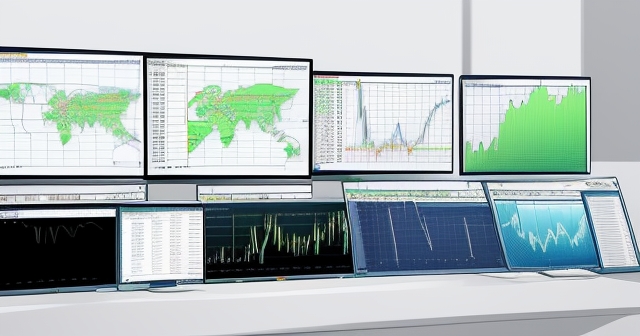
留言